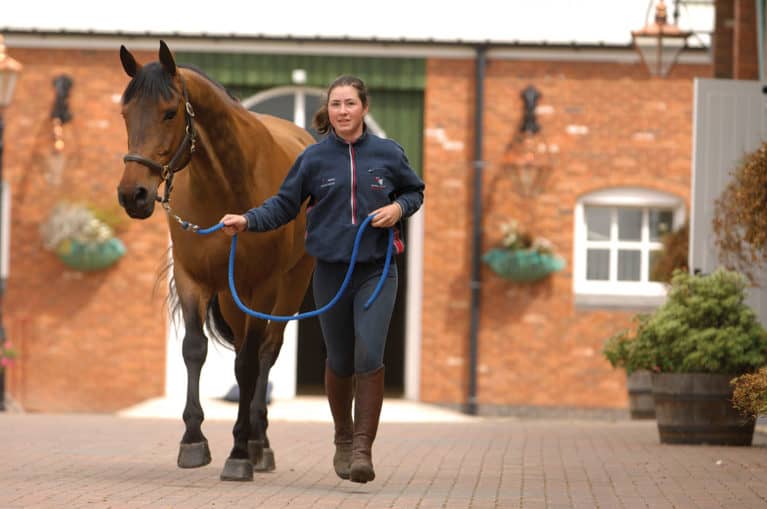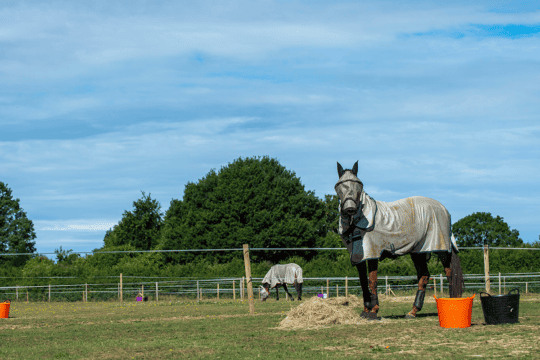It strikes fear into the hearts of horse owners, but does arthritis have to be career-ending and what options do you have if your horse is diagnosed?

When you think of arthritis, what comes to mind? The chances are that you’re not thinking of athletes at the height of their abilities. But an arthritis diagnosis isn’t quite so black and white, and with careful management, your horse may well be able to do more than you think.
In simple terms, arthritis affects the function of a joint and causes painful or stiff movement. The disease goes through various stages and, depending on how early it’s caught and how it’s treated, can have little effect on your horse’s capacity for work or, in severe cases, be career-ending. In most cases, however, it’s possible to continue to enjoy your horse while offering him a great quality of life, it just requires some adjustments to his daily routine.
It’s vital to understand that the effect that arthritis has on your horse’s body isn’t just limited to that joint. As he compensates for soreness, stiffness or limitations to his movement, discomfort can extend around his body, resulting in stiffness or inflexibility under saddle and often sending you on a wild goose chase trying to pinpoint the cause of the changes.
Signs to spot
If you suspect your horse has arthritis, it’s important to get your vet out as soon as possible, because although there’s no cure for the disease, it’s easier to manage its symptoms the earlier it’s caught.
Some common indicators of arthritic changes include…
- stiffness
- reduced lateral flexibility
- unwillingness to move forward
- uncharacteristic refusals while jumping
- heat and swelling around a joint
- lameness
The right weight
It’s important to prioritise maintaining your horse’s ideal bodyweight in order to prevent adverse effects to his joints. If he’s carrying extra weight, his joints will be forced to work harder to support him, which has a cumulative effect on their long-term flexibility and function. Speak to a vet or an equine nutritionist to calculate your horse’s ideal weight, then regularly check it using a weightape to ensure that it hasn’t crept over the ideal number.
Riding it out
Maintaining an exercise routine is key to keeping your horse comfortable, as regular movement encourages the production of synovial fluid, and helps to strengthen the muscles and ligaments that support the joint. However, you may find that you need to make some adjustments to your expectations in order to keep him sound…
- allow for a longer warm-up and focus on stretching exercises – for example, stretchy trot circles – to help counteract his stiffness.
- tailor your schooling sessions to his needs – for example, working on smaller circles and doing a lot of jumping puts more strain on your horse’s joints than gentle flatwork, so don’t overdo it and pay attention to how he feels after a workout.
- work in tandem with your vet to create an exercise plan that helps, rather than hinders, the specific limitations of your horse’s arthritic condition.
- be conscious of the surfaces that you ride your horse on – too much work on excessively hard ground, uneven surfaces or slippery going can cause extra wear and tear on his joints, speeding up the progression of the disease. Pay attention to how your horse reacts to certain conditions and surfaces, then structure his routine around his needs. He may find a harder surface more supportive or he may end up sore after doing roadwork. Likewise, some horses will find that the harder work required to work on a soft surface exacerbates the problem while, for others, the cushioning effect may be more comfortable. Avoid rutted fields, as picking his way across them increases the twist and torque on his joints.
- be flexible, because your horse is likely to have the occasional day when he doesn’t feel his best, so don’t get hung up on getting another schooling session in on those days. Instead, take him for a gentle hack. One bad day doesn’t mean that his working days are behind him, but pushing him to work through them could shorten his career.
Find out more about caring for your arthritic horse and read our vet’s guide to managing the condition, check out the May issue of Horse&Rider magazine, on sale 4 May.
Your Comments
2 thoughts on “How to manage arthritis in your horse”
Leave a Reply
You must be logged in to post a comment.
















This article was amazing thank you. I had the diagnosis on Tuesday for my 8 year old Australian stock horse x. Lucky came to me as a rescue in January and I have been devastated over the diagnosis however this article for the first time in days has really lifted my heart. I would even love a good exercise regime for early onset of arthritis (very mild at this stage) showing stiffness in the mornings but is often feeling great in the afternoons.
We bought a Warmblood horse for jumping. She is 10 years old, and have arthiritis in her front leg. Some people say if we maintain the arthiritis, she can still jump. I am not sure. Currently she is jumping 90cm.